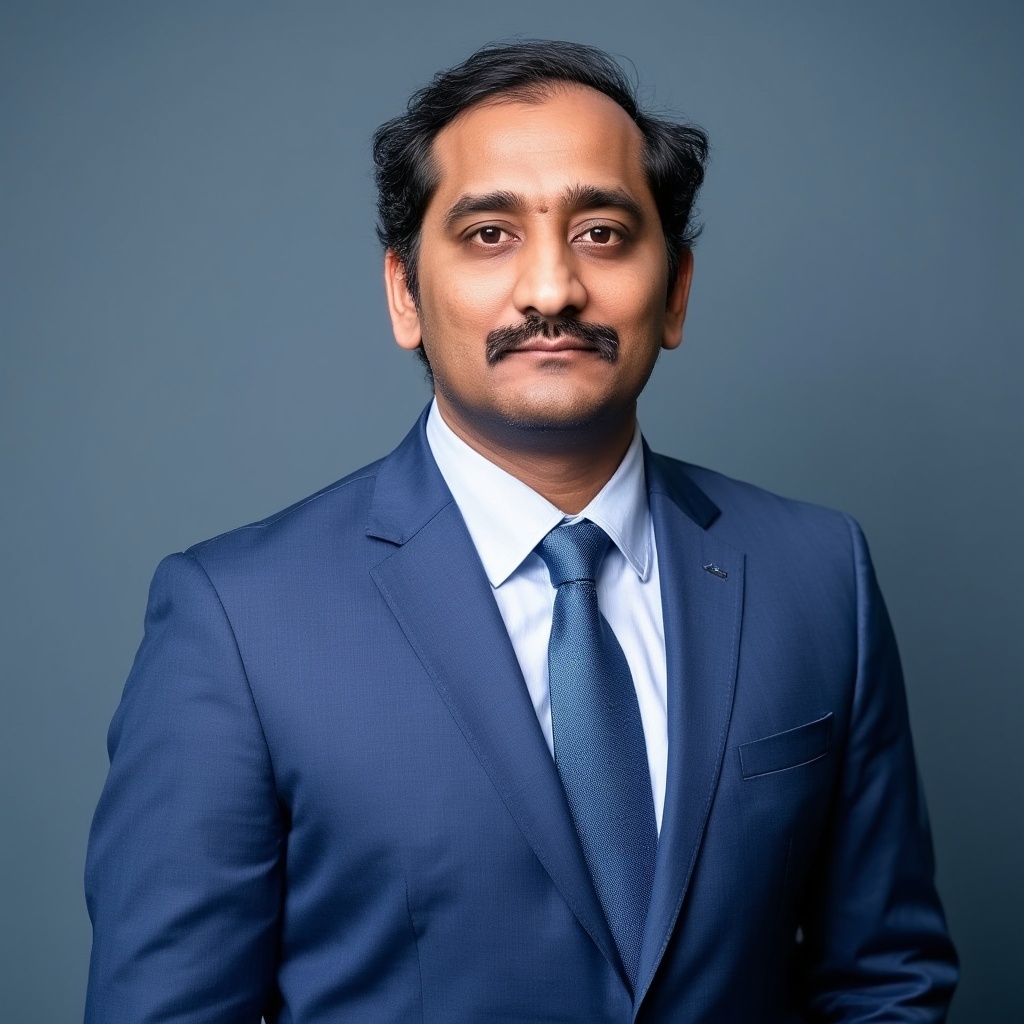Botlagunta Preethish Nandan is a distinguished expert who is building the future of manufacturing. He has over a decade of experience in data analytics, SAP systems, and semiconductor technologies, which has helped him develop a sharp eye for solving the industry’s toughest problems. At ASML, Preethish works with AI and manufacturing, diving deep into lithography systems, defect detection, and performance optimization.
Preethish’s work is powering real results in chipmaking and driving conversations on what’s next. In this interview, he explores his journey from India to the heart of global tech, his thoughts on AI’s expanding role in smart manufacturing, and how we can think bigger about sustainable, scalable innovation. Preethish offers a grounded, forward-thinking view of where advanced manufacturing is headed and why it matters.
Q1. Preethish, it’s a pleasure to be with you today. With your remarkable journey across Collins Aerospace, Rockwell Collins, and now ASML, how would you describe the evolution of your career in analytics and its intersection with the latest semiconductor technologies?
Preethish Nandan: My career has been defined by a consistent pursuit of applying data analytics to solve complex engineering and manufacturing challenges. At Collins Aerospace and Rockwell Collins, my focus was on establishing foundational analytics capabilities within high-reliability environments, often dealing with large volumes of sensor and operations data. These roles honed my skills in predictive modeling, process optimization, and the strategic deployment of business intelligence platforms.
Transitioning to ASML, I’ve been able to build on that foundation within the incredibly dynamic world of semiconductor technology, especially in areas like computational lithography and high-NA EUV. Here, analytics takes on a more advanced and mission-critical role. We’re not just identifying trends or inefficiencies; we’re developing AI-driven systems that directly influence the precision and scalability of chip manufacturing. The intersection of deep learning, high-throughput metrology data, and ultra-complex patterning models has made this phase of my career both technically rewarding and impactful on a global scale.
Q2. In your paper “Leveraging Agentic AI and Deep Learning for Computational Lithography Optimization,” you explore methods to reduce patterning defects while enhancing semiconductor yield. Could you walk us through how Agentic AI specifically transforms traditional defect detection workflows within high-volume chip production environments?
Preethish Nandan: Agentic AI fundamentally redefines traditional defect detection by introducing autonomous, decision-making capabilities into the computational lithography workflow. In conventional systems, defect detection is often reactive and heavily reliant on predefined rule sets or human intervention. Agentic AI changes this paradigm by embedding a goal-oriented, adaptive framework that not only identifies anomalies but also initiates corrective actions dynamically.
In high-volume semiconductor production, this means Agentic AI models continuously learn from metrology and imaging data in real-time, refining their understanding of defect signatures as production scales. The models autonomously propose and validate resolution enhancement strategies, such as mask optimization or dose tuning—without the need for exhaustive manual testing. This leads to a significant reduction in defect propagation and variability across wafers, ultimately improving yield consistency.
The key advantage lies in the AI’s ability to operate across multiple feedback loops within the lithography ecosystem, enabling proactive quality control that scales with manufacturing demands.
Q3. Your role at ASML places you at the heart of High-NA EUV lithography’s development, a technology crucial for reaching sub-2nm nodes. From your perspective, what are the most underestimated challenges in scaling this technology for mass production, and how does your work in predictive analytics help mitigate them?
Preethish Nandan: Absolutely. High-NA EUV lithography represents a breakthrough in enabling sub-2nm semiconductor nodes, but it comes with a unique set of challenges that are often underestimated, particularly when transitioning from lab-scale feasibility to mass production.
One major challenge is overlay control—maintaining nanoscale alignment accuracy across multiple layers at extremely high throughput. Even the slightest drift in environmental or mechanical conditions can compromise device integrity. Another overlooked difficulty is the complexity of mask design and defect management at such small geometries. Optical distortions and stochastic effects become more pronounced, requiring advanced simulation and compensation techniques.
This is where predictive analytics plays a critical role. At ASML, we use advanced modeling techniques and AI-driven analytics to anticipate system behavior and process deviations before they lead to performance loss. For instance, by building predictive models that correlate tool performance metrics with wafer outcomes, we can identify early warning signs of system drift, component fatigue, or environmental inconsistencies.
Moreover, real-time data integration from sensors embedded within the lithography tools allows us to dynamically adjust operating parameters, ensuring consistent pattern fidelity. Predictive analytics also supports faster learning cycles, enabling engineers to optimize tool settings with fewer experimental wafers, which is crucial for cost-effective scaling.
By embedding intelligence into the system itself, we are effectively transforming lithography from a reactive process into a proactive, self-correcting platform, which is essential for the successful industrialization of High-NA EUV.
Q4. In your recent publication “The Role of AI and Neural Networks in Predictive Maintenance of High-NA EUV Lithography Machines,” you highlight the significance of real-time data modeling. How do you ensure that the predictive systems are not just accurate, but also adaptable to the fast-evolving requirements of semiconductor manufacturing?
Preethish Nandan: That’s a key concern in today’s dynamic semiconductor landscape. Accuracy in predictive maintenance is only part of the equation—the real value comes from adaptability, especially when working with complex, cutting-edge systems like High-NA EUV lithography machines.
To ensure adaptability, we implement modular neural network architectures that are designed to evolve alongside the machines they monitor. These models are not static; they continuously retrain using streaming data from thousands of sensors embedded across the lithography toolset. This allows the models to account for new failure modes or shifts in operational patterns without requiring complete reengineering.
We also deploy transfer learning techniques, which enable models trained on one tool or configuration to be fine-tuned rapidly for another with minimal data. This is essential for scaling predictive maintenance strategies across multiple systems and fabs without extensive revalidation.
Another critical aspect is closed-loop feedback: integrating the predictions with automated control systems allows for immediate corrective actions, like recalibration, tool maintenance scheduling, or component replacement, thereby preventing unexpected downtime.
In essence, adaptability is baked into the lifecycle of our predictive systems through continuous learning, data-driven model refinement, and tight integration with operational workflows. This ensures that as semiconductor manufacturing evolves, our AI systems remain resilient, responsive, and ready to support it in real time.
Q5. With your deep experience using tools like SAP HANA Cloud and Spotfire at ASML, how do you integrate enterprise analytics platforms with the highly specialized needs of computational lithography and metrology systems?
Preethish Nandan: Integrating enterprise analytics platforms like SAP HANA Cloud and Spotfire with the highly specialized world of computational lithography and metrology requires a deliberate and layered architecture that bridges enterprise-scale data with domain-specific insights.
At ASML, we leverage SAP HANA Cloud as a high-performance backbone for ingesting and harmonizing vast volumes of structured and unstructured data from across the manufacturing ecosystem. This includes everything from equipment sensor logs and process telemetry to business KPIs. We then use data virtualization to create seamless views that blend operational and analytical data, enabling engineers, data scientists, and business stakeholders to work from a unified source of truth.
Spotfire serves as the visualization and advanced analytics layer. What makes it powerful is its ability to interactively analyze massive datasets from HANA Cloud and correlate parameters from metrology systems and computational lithography workflows. This enables us to, for example, visualize defect density trends across wafers and overlay them with tool maintenance events or exposure settings, helping pinpoint root causes faster.
To address the specialized requirements of lithography, we extend these platforms with custom-built analytical models and domain-specific data pipelines, including physics-informed machine learning models, mask optimization engines, and AI-driven defect classifiers. These models are integrated into dashboards and workflows that are intuitive for lithography engineers to use but powered by robust enterprise-grade infrastructure.
This hybrid approach ensures that while we maintain enterprise-wide consistency and governance, we also deliver deep, actionable insights tailored to the unique physics and engineering challenges of semiconductor manufacturing.
Q6. Given your extensive background in both data science and traditional business intelligence, how do you envision the convergence of generative AI, reinforcement learning, and semiconductor design reshaping industry roles over the next five years?
Preethish Nandan: The convergence of generative AI, reinforcement learning (RL), and semiconductor design is set to radically transform both the skillsets required and the roles played within the industry.
Traditionally, semiconductor development has been driven by iterative design cycles and human-intensive processes. But with generative AI, we’re now enabling models that can autonomously create and optimize chip layouts, photomask patterns, or even equipment parameters based on performance goals, power constraints, and yield targets. This automation will compress design timelines and significantly reduce manual overhead, shifting the focus from execution to validation and governance.
Reinforcement learning, on the other hand, is making it possible to fine-tune lithography and metrology parameters in real time, learning from environmental feedback in high-throughput fabs. When combined with generative AI, RL can drive closed-loop optimization systems, where tools continuously adapt to meet production and performance targets, even in the face of variation or drift.
From a workforce perspective, this convergence means that engineers will increasingly take on roles as AI supervisors and orchestrators, responsible for curating training data, interpreting model outputs, and embedding domain constraints into AI systems. Meanwhile, data scientists and ML engineers will need to gain deeper domain knowledge to build models that are not just accurate but also physically grounded and manufacturable.
Ultimately, we’ll see the emergence of hybrid professionals—those who combine semiconductor expertise with AI fluency—and the companies that foster this talent transformation will lead the next wave of innovation in chip design and smart manufacturing.
Conclusion
Through this interview, Preethish Nandan brings precision backed by vision. His ability to connect AI models with the real-time demands of semiconductor manufacturing shows what’s possible when experience meets innovation. His proactive work includes predictive maintenance and high-resolution lithography, which is already being integrated into what will now shape the near future.
But most of all, Preethish emphasizes always being curious, always questioning, and always improving. Until that, sustainable, smart manufacturing won’t happen through theory alone. It needs sharp thinkers, people willing to get their hands on the data and find practical, scalable solutions.







